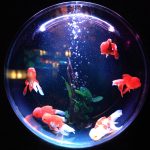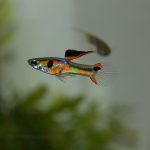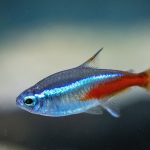How Koi Pond Filtration Works: A Comprehensive Guide
Koi ponds are beautiful additions to any garden or backyard, offering a tranquil space and mesmerizing views of colorful Koi fish gliding gracefully through the water. However, maintaining a Koi pond can be a challenging task, especially when it comes to keeping the water clean and free from pollutants. This is where Koi pond filtration systems play a crucial role. In this article, we will delve into the intricacies of how Koi pond filtration works, exploring each element of the process, and providing valuable insights for maintaining a thriving aquatic environment.
How Koi Pond Filtration Works?
At the heart of a healthy Koi pond lies an efficient filtration system. Koi pond filtration works through a combination of mechanical, biological, and chemical processes. These processes work in harmony to remove debris, harmful substances, and excess nutrients from the water, ensuring optimal conditions for the Koi to thrive.
1. Mechanical Filtration
Mechanical filtration is the first line of defense in a Koi pond filtration system. This process involves physically removing large debris and particles from the water. Typically, a series of filters, such as skimmers, brushes, and sieves, are used to trap leaves, uneaten food, and other visible waste. By eliminating these contaminants, mechanical filtration prevents them from breaking down and becoming harmful to the water quality.
2. Biological Filtration
Biological filtration is a crucial step in maintaining a stable and healthy pond environment. This process harnesses the power of beneficial bacteria to break down harmful substances, such as ammonia and nitrites, which are produced from fish waste and decaying matter. These bacteria colonies establish themselves on biological filter media, such as bio-balls or porous stones, where they convert these harmful substances into less toxic compounds, like nitrates.
3. Chemical Filtration
Chemical filtration serves as a supplementary process in the Koi pond filtration system. Activated carbon is often used as the primary chemical filter media. It works by adsorbing impurities and contaminants that may have bypassed the mechanical and biological filters. This includes removing dissolved organic compounds and certain medications that might be present in the water.
4. UV Sterilization
UV sterilization is an advanced filtration process that helps control harmful microorganisms in the water. A UV sterilizer utilizes ultraviolet light to disrupt the DNA of algae, bacteria, and parasites, preventing their reproduction and growth. This process is highly effective in reducing algae blooms and the risk of diseases among Koi.
5. Pump and Circulation
An efficient pump and circulation system play a vital role in ensuring the effectiveness of the filtration process. The pump is responsible for circulating the water through the filtration system, facilitating the removal of debris and its exposure to beneficial bacteria and chemical media. Proper circulation ensures all areas of the pond receive adequate filtration, preventing dead spots where pollutants can accumulate.
6. Backwashing and Cleaning
Regular maintenance is essential to keep the filtration system functioning optimally. Backwashing involves reversing the flow of water through the filters to dislodge trapped debris and waste. Additionally, periodic cleaning of the mechanical and biological filter media prevents clogging and maintains the system’s efficiency.
7. Monitoring Water Parameters
To ensure the filtration system is working effectively, it’s essential to monitor water parameters regularly. Testing for ammonia, nitrite, nitrate, pH, and temperature helps identify any imbalances and allows for timely adjustments to maintain a healthy pond environment.
Advantages of Koi Pond Filtration
The implementation of a robust filtration system in your Koi pond offers several significant advantages that contribute to the overall well-being of your fish and the aesthetics of the pond:
1. Crystal-Clear Water
An efficient filtration system ensures the water remains clear and free from suspended particles, providing a stunning view of your Koi.
2. Healthy Koi
By removing harmful substances, the filtration process creates a safe and healthy environment for your Koi to thrive and grow.
3. Algae Control
Proper filtration reduces nutrient levels, inhibiting algae growth and preventing unsightly algae blooms.
4. Disease Prevention
UV sterilization and efficient filtration help minimize the risk of disease outbreaks among your Koi.
5. Oxygenation
The constant circulation of water through the filtration system enhances oxygen levels, vital for the well-being of aquatic life.
Frequently Asked Questions (FAQs)
Q: How often should I clean my Koi pond filter?
A: It’s recommended to clean mechanical filter components, such as skimmers and sieves, weekly to prevent clogging. Biological filter media should be cleaned every four to six weeks, but avoid washing them with tap water, as it may harm beneficial bacteria.
Q: Can I turn off the filtration system at night?
A: It’s not advisable to turn off the filtration system at night, as Koi ponds require continuous oxygenation and filtration. However, you can reduce the pump’s flow rate during the night to minimize disturbance.
Q: Should I use beneficial bacteria supplements?
A: Yes, adding beneficial bacteria supplements can boost the biological filtration process, especially during pond startup or after using medications. Choose high-quality products designed specifically for Koi ponds.
Q: How do I know if my UV sterilizer is working?
A: UV sterilizers have indicator lights that show if the unit is operational. You can also conduct a visual check to ensure the ultraviolet bulb is emitting light.
Q: Can I use a waterfall as a filtration method?
A: While waterfalls provide some aeration, they are not sufficient as the sole filtration method. It’s best to integrate a dedicated filtration system to maintain water quality effectively.
Q: Is overfiltering a Koi pond possible?
A: Yes, overfiltering is possible. While a robust filtration system is essential, excessive filtration may strip the water of beneficial nutrients required for Koi health. Strive for a balance that suits your pond’s size and fish population.
Conclusion
Understanding how Koi pond filtration works is crucial for maintaining a beautiful and healthy pond that fosters the well-being of your Koi fish. A comprehensive filtration system, combining mechanical, biological, and chemical processes, ensures crystal-clear water, disease prevention, and optimal water quality. Regular maintenance and monitoring of water parameters are key to keeping your Koi pond in pristine condition. With the knowledge and insights gained from this guide, you can create a thriving aquatic haven that brings joy and serenity to both you and your Koi.




